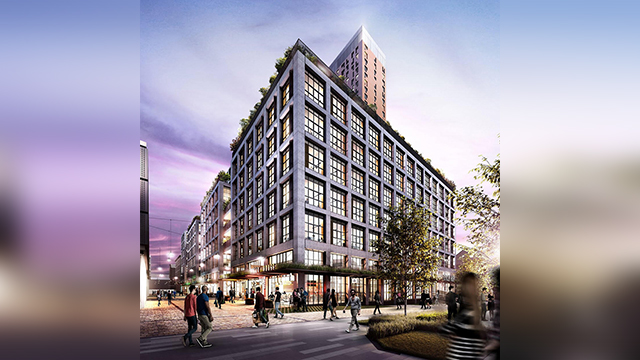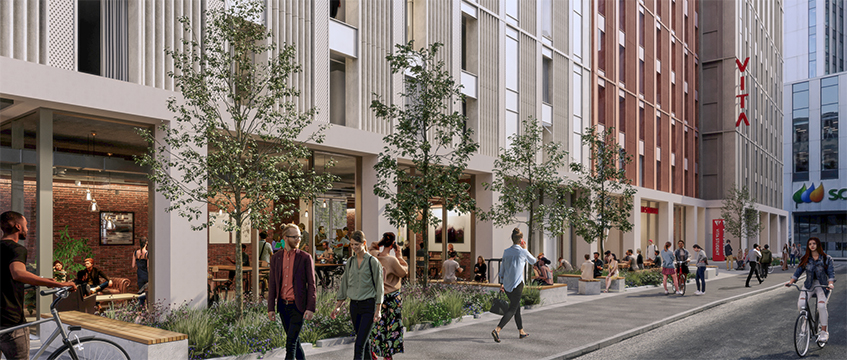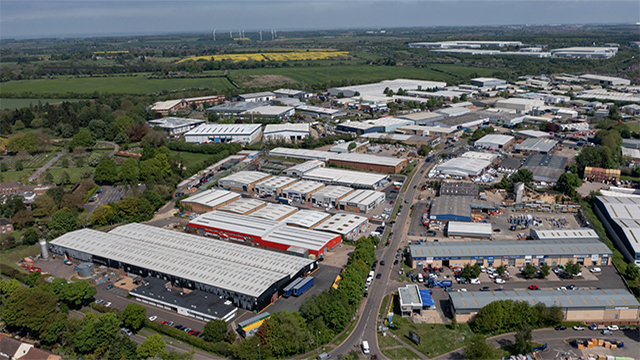Smart buildings, not-so-smart occupiers?
To design truly sustainable buildings, the way tenants use them must be taken into account, writes Anne Johnstone.
As the sustainability agenda gathers steam, more buildings than ever are implementing smart technology. This technology ranges from placing smart meters in buildings to taking thermal mass into account during the building process – measures that are designed to achieve the best EPC rating possible.
However, many of today’s most sustainably designed buildings have scored much lower than anticipated once in use. According to the UK Green Building Council, there can be as much as a 250% performance gap between an EPC rating and the actual energy performance of a typical building.
To design truly sustainable buildings, the way tenants use them must be taken into account, writes Anne Johnstone.
As the sustainability agenda gathers steam, more buildings than ever are implementing smart technology. This technology ranges from placing smart meters in buildings to taking thermal mass into account during the building process – measures that are designed to achieve the best EPC rating possible.
However, many of today’s most sustainably designed buildings have scored much lower than anticipated once in use. According to the UK Green Building Council, there can be as much as a 250% performance gap between an EPC rating and the actual energy performance of a typical building.
Even under the best-case scenario, the performance gap between the modelled performance reported on the EPC and actual performance can be as large as 80%. The cause? The very tenants that reside inside the building. Occupiers are not using their buildings as efficiently as possible, rendering many supposedly sustainable buildings not sustainable at all.
Sustainable design
We do not have to see the green roofs in London and Paris to know that sustainable design practices have affected the property industry at every level.
Construction businesses in the UK are taking pains to minimise construction waste and source materials sustainably, but eco-conscious builders take these practices one step further. Increasing insulation prevents heat from escaping buildings quickly, as does making windows and doors airtight. Many buildings are now built in consideration of thermal mass, allowing the building to regulate temperatures easily.
While these initiatives are important parts of reducing the carbon footprint of the built environment, much of their efficacy comes down to tenant use, and it is here that sustainability methods falter. Occupiers overusing specially designed heating, ventilating and air conditioning (HVAC) systems often override all positive effects of the system. UK occupiers are some of the worst offenders for inefficient use of air con – Daikin sells more wall controllers in the UK than it does in the rest of the world combined.
The same is true of tenants opening windows while using the heating, using smart energy meters in a decidedly unintelligent way, or installing an incorrect fixture where a more sustainable one was intended. The best way to ensure a sustainable building remains sustainable, is to remove control from the users. However, what impact does this have on wellbeing?
It is also not an uncommon occurrence to find buildings that have been constructed incorporating sustainable technologies, such as combined heat and power (CHP) or biomass boilers, that are then never used. There can be many reasons for this, including equipment being wrongly specified in the first place and not being able to provide a suitable load once the building is in use, difficulties in sourcing or storing biomass fuel – or simply that no one knows how to use it.
Often, it’s not a technical issue at all – funds may be available within a capital budget to install a renewable or low-energy technology, but then there is no money within the operational budget to use it. Landlords and tenants need to work together to ensure that refurbishments and fit-outs create zero-carbon buildings. These are artificial barriers that can be removed by looking carefully at contracts and thinking through the – perhaps unintended – consequences of the interests of the various stakeholders involved at different stages in a building’s lifecycle being incompatible.
Performance measurement
True sustainability cannot be achieved without collecting data. Put simply, if you don’t know where you’re starting from, there’s no way to know where you’re going. However, too much information becomes meaningless, so we as an industry must determine the right information to gather and how to use it.
Much of the data we need to collect surrounds the way that occupiers, both commercial and residential, interact with the buildings in which they live and work. Usage studies must be the way forward, to identify the most unsustainable practices. The findings of these surveys will help us determine whether the occupier who opens windows while blasting the air conditioning has a carbon footprint equal to the occupier who does not utilise smart technology at all. These surveys also serve to identify the methods that are most truly sustainable, allowing designers and construction professionals alike to focus on the methods that are most effective and most likely to achieve buy-in from occupiers.
Barriers to change
True change is difficult to achieve in any industry, and property is no exception. We are used to what we know and, unfortunately, the most sustainable solution is not always the most obvious or straightforward one.
Various commitments have been made by local and central governments to be net zero carbon between 2038 and 2050. In the absence of legislation, the main focus is currently on targeting individual behaviour. This emphasis on the individual – asking people to make or accept changes that compromise their comfort – runs the risk of significant backlash without evidence that large institutions are sharing in the burden.
However, the fact remains that the world is on fire, and the flames are licking at our collective doorstep. Just this summer, we have experienced some of the most devastating environmental impacts that the world has ever seen. Tropical storms are growing in strength and size. Glaciers are disappearing. The Amazon is burning to the ground.
Individual actions matter; the largest barrier to sustainability when it comes to use is changing the deeply seated habits of a building’s occupiers. Because changing habits also changes thinking, and to be really effective those actions must aggregate into pressure on those who can make the biggest systemic changes – governments, councils and landlords.
Anne Johnstone is a partner at Hollis











